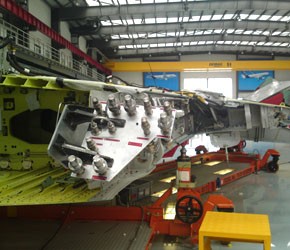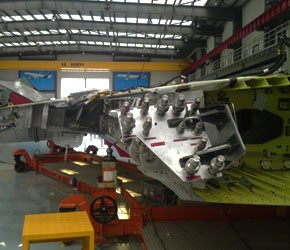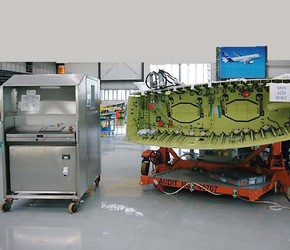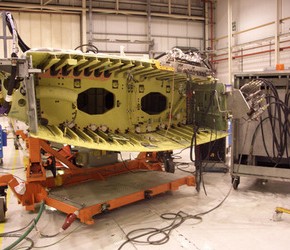Hydraulic Test Equipment > Fuel System Test Rigs > Manometer Test Units
The Manometer units are designed to test the joints and seals on the `core box section
of a wing at precise, low level pressures. This is done to ensure that there are no fuel leaks
in aircraft operation.
A mechanical /manual pressure release system is normally fitted to the wing box under test.
With increasing internal pressure, the external surfaces of the wing box will "bow out". A probe,
linked to an electronics circuit, is positioned on the external side of the inboard rib. The electronics interprets the signal and turns off the pumps on the air supply station at the appropriate maximum "bow-out" (normally 0.025"). As this equipment works at extremely low pressure, typically two psi,
they are fitted with three electronic and two pneumatic safety cut out features.
The Manometer is calibrated, after initial set-up, with the Pressure Calibration Unit (PCU),
Display Calibration Unit (DCU) and the Differential Trip Box (Trip Box).
The air supply hose from the air/helium supply station is connected to the
Wing Box. Another hose is connected from the Wing Box to the Manometer.
Alternatively, the manometer may be �Tee�d� into the air supply at any location
along the pipe.
The manometer measures and displays the wing pressure and automatically
operates a solenoid to open a valve to release the air in the wing box should it
reach the pressure blow-off value.
Dual setting manometers are available for testing different areas within a wing
box. For dual pressure manometer, as a customer option, the pressure setting
switch may be located behind the lockable front panel to inhibit casual or
inadvertent use.
The manometer is an over-pressure safety device.




